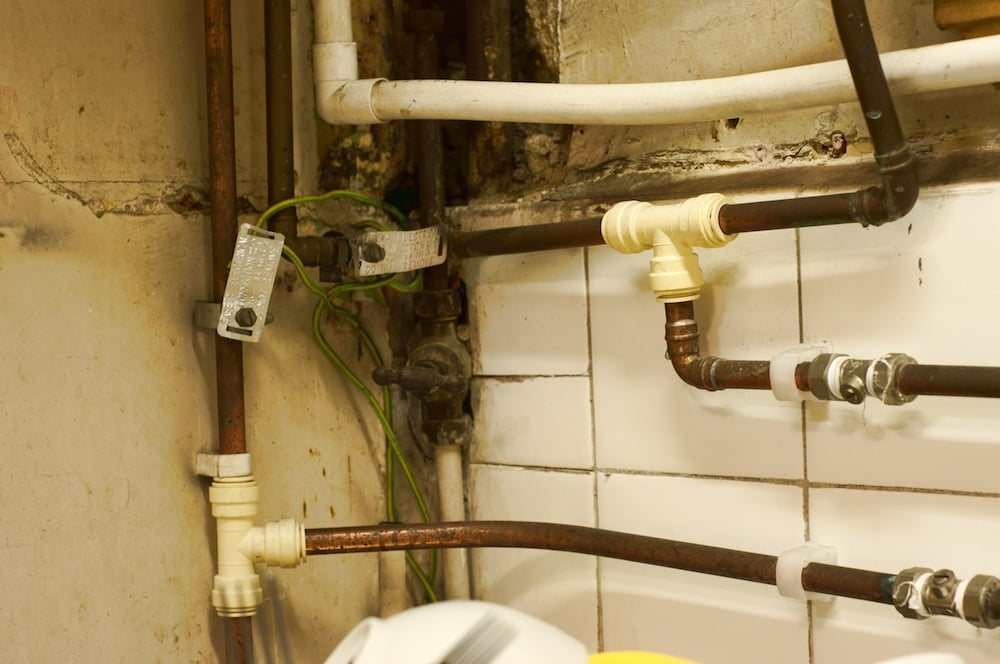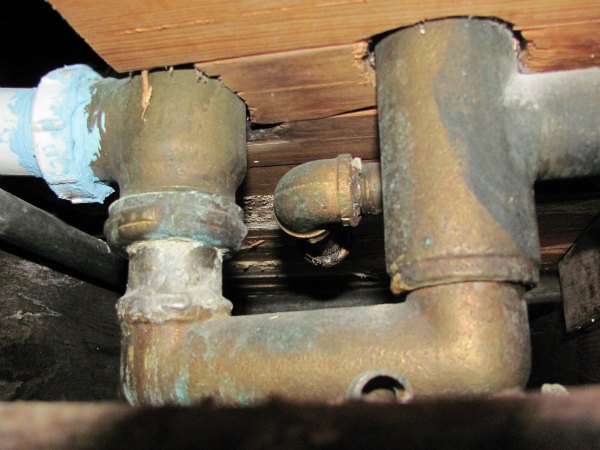Managing Plumbing Problems in Older Homes: Important Advice
Call TodayWhat're your opinions about Main Plumbing Issues Found in Old Houses?

Older homes often feature appeal, character, and background, but they can likewise bring a host of plumbing issues. Whether you're handling aging pipelines, low water stress, or leakages, understanding how to deal with these usual troubles is vital to preserving a safe and useful home. In this overview, we'll explore the common pipes obstacles dealt with by older homes and provide practical remedies to keep your plumbing in leading shape.
Understanding Usual Pipes Issues
Aging Pipes
One of one of the most typical concerns in older homes is aging pipes. Relying on the age in which your home was constructed, the pipelines might be made from products that have actually degraded over time, such as galvanized steel, cast iron, or perhaps lead. These materials can corrode, come to be fragile, or create leaks, bring about water damage and prospective carcinogen.
Water Quality Testing
Older pipelines can affect the high quality of your water. Conduct a water top quality test to check for pollutants such as lead, corrosion, or various other pollutants that might be presented by aging pipes.
Solutions for Usual Pipes Issues
Changing Aging Pipelines
If your home has old, deteriorating pipes, think about replacing them with modern materials like copper or PEX. This can be a substantial investment, however it will protect against future concerns and enhance the safety and security and reliability of your pipes system.
Repairing Low Tide Stress
To fix low water pressure, begin by cleansing or replacing old components and getting rid of mineral buildup in the pipes. If the problem continues, it may be needed to change sections of corroded pipelines.
Fixing and Replacing Dripping Pipelines
For little leaks, you can make use of pipeline clamps or epoxy putty as a temporary repair. However, it's best to change leaking pipelines totally to prevent additional damages.
Updating Components
Updating old fixtures to contemporary, water-efficient versions can enhance your home's pipes efficiency and lower water consumption. Seek components with the WaterSense tag for the best efficiency.
Handling Pipe Corrosion
If your pipes are worn away, replacing them with corrosion-resistant products like copper, PVC, or PEX is the best option. Normal inspections and water quality upkeep can aid prevent even more corrosion.
Low Tide Stress
If you're experiencing low tide pressure, maybe because of mineral deposits, rust inside the pipes, or old components that are no longer functioning efficiently. This can be a major hassle, especially in areas like showers and sinks.
Leaking Pipelines
Leakages are an additional regular issue in older homes, often caused by rusty or worn-out pipelines. Even little leaks can bring about significant water damages, mold and mildew development, and increased water costs if not dealt with immediately.
Obsolete Fixtures
Out-of-date pipes fixtures such as taps, bathrooms, and showerheads not only look old however may additionally be less efficient, vulnerable to leakages, or incompatible with modern-day pipes requirements.
Pipe Rust
Rust is a typical trouble in older pipes, specifically those made from galvanized steel or cast iron. Rusty pipelines can limit water circulation, trigger discoloration, and at some point lead to leakages or pipeline bursts.
Assessing the Condition of Your Plumbing
Checking Visible Pipes
Start by evaluating any visible pipes in your home, such as those in cellars, crawl spaces, or under sinks. Look for signs of rust, leakages, or corrosion, which can indicate underlying issues.
Checking for Leakages
Check for leaks by inspecting areas around faucets, toilets, and under sinks. You can additionally monitor your water meter prior to and after a period of no water utilize to detect surprise leaks.
When to Call a Specialist
While some plumbing concerns can be managed with do it yourself options, there are times when it's ideal to call a specialist. If you're handling significant leaks, comprehensive corrosion, or are uncertain regarding the condition of your pipes, a licensed plumbing professional can supply experienced analysis and repair.
Preventive Maintenance Tips
Routine Examinations
On a regular basis check your pipes system for indicators of damage. Capturing issues early can avoid pricey fixings down the line.
Water Pressure Guideline
Ensure your water stress is within the advised range to prevent worrying your pipelines and components. A plumber can install a pressure regulator if required.
Water Top Quality Maintenance
Set up water filters or conditioners if your water high quality is poor. This can shield your pipes and components from damage caused by hard water or pollutants.
Positive Pipe Substitute
If your home has very old pipelines, think about aggressive replacement before major problems develop. This can save you from emergency situation repair work and water damage.
Verdict
Handling plumbing issues in older homes requires a combination of watchfulness, preventative maintenance, and prompt upgrades. By recognizing the typical difficulties and knowing when to seek specialist help, you can ensure your pipes system remains practical and reputable for many years to come.
7 Common Plumbing Issues in Older Homes
Read More Plumbing Articles
Whether you're mulling over purchasing your dream period property, or you already own one, being aware of common plumbing problems in old homes can help you avoid expensive mishaps.
Many plumbing problems in old homes are similar to those faced in newer properties, but some are more prevalent in houses over a certain age. If you've recently bought an old house or haven't had your aging plumbing system inspected in a while, it's worth keeping an eye out for the following issues:
Bad Pipe Materials
Depending on the age of your home, the pipe materials used in your plumbing system may not comply with modern building codes and could be unsafe.
Lead pipes are the most dangerous type of old plumbing pipes. This metal was once used extensively for manufacturing water pipes because it's easy to shape and has a long lifespan. Plumbers also used it to solder joints between pipes made from other materials. However, lead can cause serious health problems, particularly in children. Drinking water from pipes containing lead can lead to lead poisoning symptoms, such as stomach pain and fatigue, so it's essential to replace them if you discover them in your home.
Outdated Fixtures
Even if the previous owners installed high-quality fixtures, these won't be immune to the effects of age and wear and tear. Over time, fixtures can corrode and wear down, increasing the likelihood of leaks and clogs.
Sometimes, an outdated fixture can be a minor irritation that makes using your plumbing system less convenient. However, it's best to maintain older plumbing components carefully and replace them when they show signs of failure to avoid a major leak and water damage.
Corroded or Leaking Pipes
Corroded pipes are a common plumbing issue in old homes. Corrosive substances in the water supply can gradually break down the metal used to make the pipes, eventually causing leaks. Corrosion can also cause sediment to build up, increasing the chances of a clogged pipe. All these issues take time to develop, making them more likely in old house plumbing.
Drain Problems
Older home drainage systems were often installed before the arrival of appliances such as garbage disposals, so they're frequently incapable of handling modern household usage. The result could be frequent clogs or water backing up into sinks and other fixtures.
A failing sewer line is the most serious drainage issue commonly encountered in old houses. This problem is more likely if you've remodeled your home to add more fixtures, placing more pressure on a sewer line not designed for the purpose. Eventually, the line can become clogged, causing unpleasant indoor smells, poor drainage and contaminated wastewater backing up into your fixtures.
Pipe Bellies
Pipe bellies develop when pipes buried in your home's foundation start sagging as the building settles. They create downward slopes, affecting water drainage and increasing the risk of significant blockages. You don't need to worry about pipe bellies in a pressurized main line, as the water pressure prevents the pipes from clogging, but they can cause issues in drain lines.
Root Intrusion
Root intrusion occurs when trees and other shrubs grow roots too close to your sewer line or water service line. Sometimes, the roots penetrate the pipe walls, leading to leaks and soft or wet areas in your yard.
Unfortunately, root intrusion is a more common plumbing problem in old homes. That's because older houses are more likely to have pipe bellies allowing standing water to accumulate, attracting roots to the moist conditions.
https://www.elocal.com/resources/home-improvement/plumbing/faq/plumbing-issues-in-older-homes/

Hopefully you enjoyed our topic about Common Plumbing Problems in Older Homes. Many thanks for spending some time to read through our piece of content. Sharing is good. Helping people is fun. I am grateful for being here. Don't forget to pay a visit to our website back soon.
Detail